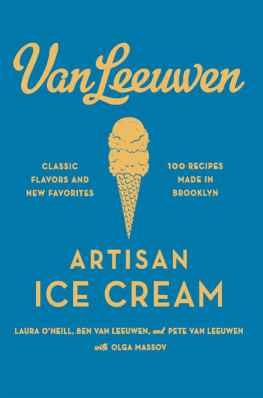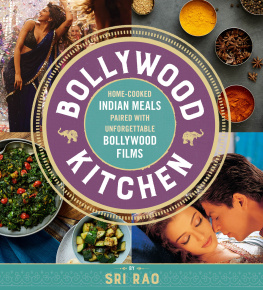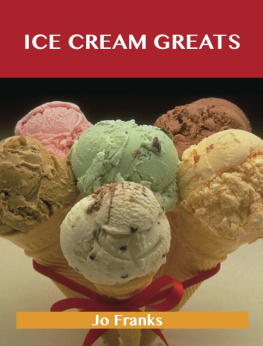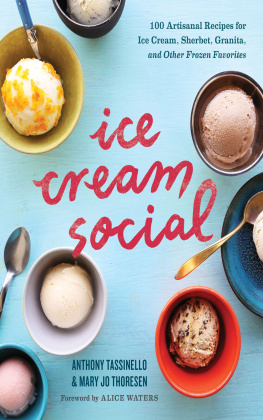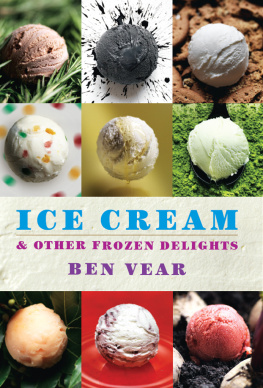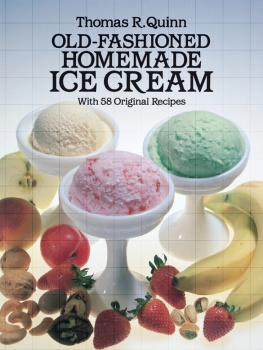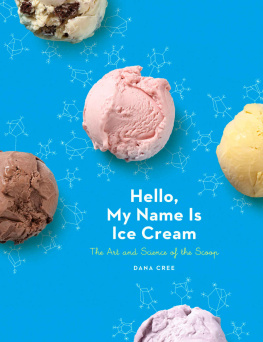
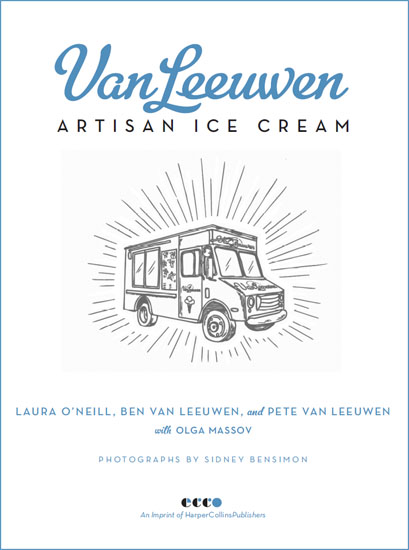
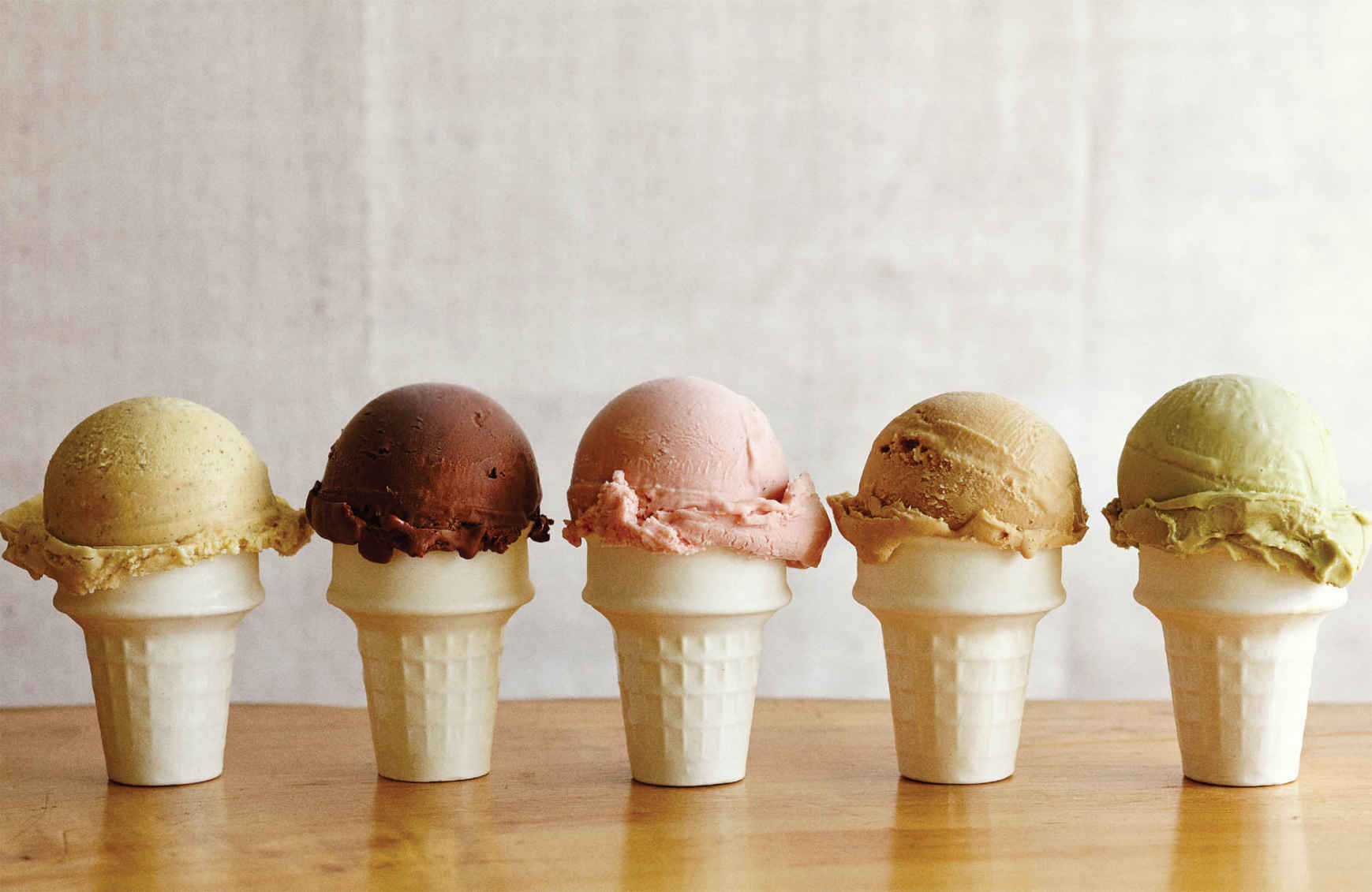
in memory of our dear friend david hamptonwe love and miss you
CONTENTS
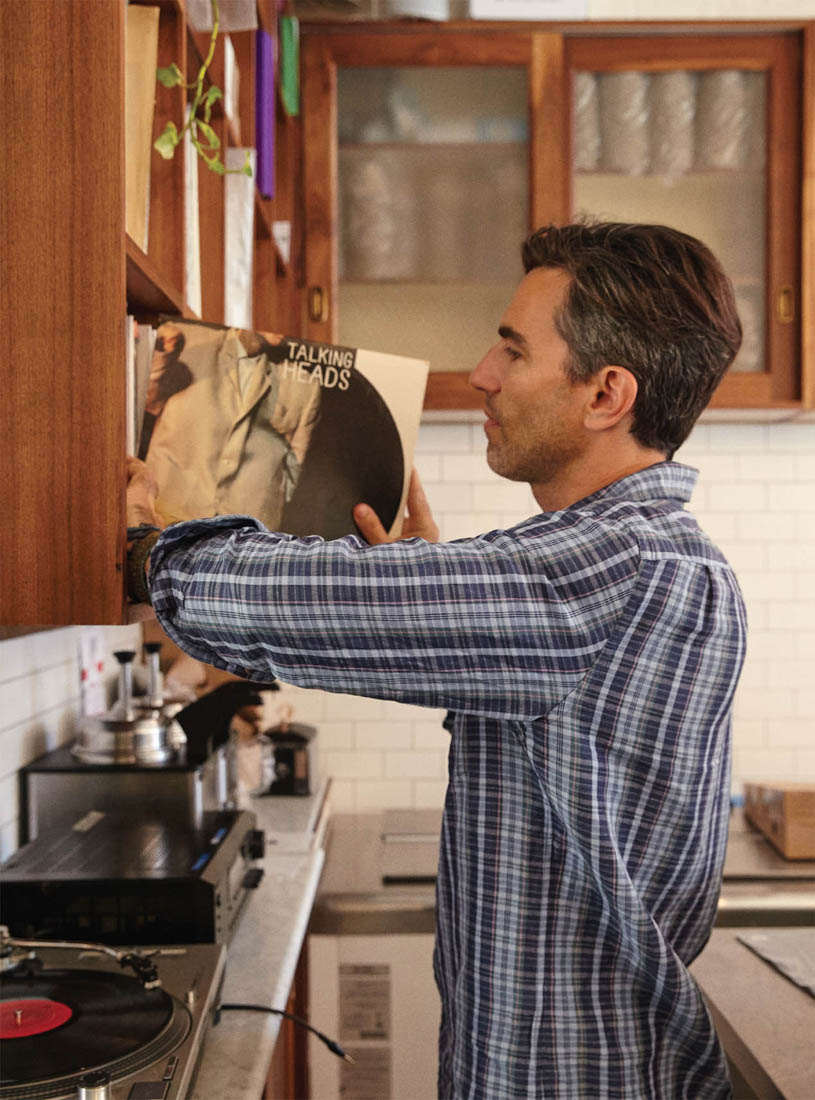
Guide
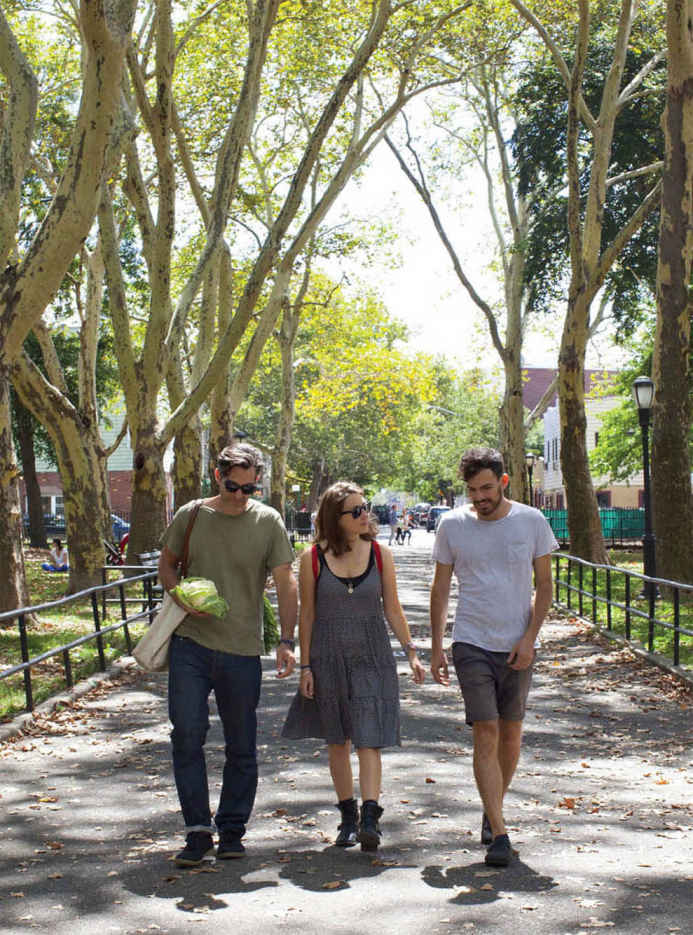
BACK TO THE BASICS, BACK TO THE KITCHEN
Since our first pair of buttery yellow trucks, lovingly dubbed the Eagle and the Bobcat, hit the streets of New York in 2008, Van Leeuwen Artisan Ice Cream has become a symbol for the revitalization of the American ice cream truck, a return to traditional ice cream making, and the celebration of responsibly sourced natural ingredients from the finest small producers in the world. A lot of hard work and many cheerful daysand nightsof trial and error have gotten us to where we are today, but it all began with the simple idea of bringing ice cream back to the basics. Real ingredients, rich, classic flavorsand little more.
When we set out in our ice cream truck for the first time in June 2008, headed to Battery Park in Lower Manhattan, we had the dream of selling ice creambut not just any ice cream. The ice cream we wanted to sell could be made with basic pantry ingredients, without any stabilizers, thickeners, or emulsifiers added to enhance the ice creams texture and mouthfeel. We were hoping to build a sustainable, environmentally conscious business that would allow us to sell our ice cream for a living, establish meaningful relationships with amazing purveyors, and run a socially conscious company where we paid people fair wages and could offer them benefits.
We were so grateful and delighted by such a warm reception from the community as well as the media. On that very first day, we were approached by a Whole Foods buyer about getting our ice cream into their New York stores! The coverage we received from the New York Times, New York magazine, Gothamist, and other local press was also generous and kind.
We knew our ice cream was differentthat our dedication to quality, simplicity, and taste was distinctand we knew that ice cream is the evergreen popular treat. We had no idea that the reaction would be as immediate and as positive as it was. Our business has grown rapidly, and today includes trucks and stores in both New York City and Los Angeles, sales to tristate-area grocery stores, and plans to expand to other markets.
It turns out our quest for an old-fashioned ice cream coincided with a cultural shift: people returning to their kitchens to put up their own preserves and pickles, make cheese and bread, and churn their own small-batch ice cream. When we started thinking about writing a book, we wanted to share our knowledge with like-minded readersthe ones who eschew additives in their ice cream (and other food) and want to make it the way their grandmother might have.
We want this to be a fresh chance to get back to the basics, and to get you, our readers, back in the kitchen, armed with the techniques, recipes, principles, and stories that have sculpted our flavors. Most of all, we want you to make and savor delicious ice cream for years to come, and to understand ice cream making well enough to create your own favorite flavors.
AN IDEA BORN
Van Leeuwen Artisan Ice Cream made its auspicious start as the result of an ad-inspired whim of a summer job: Make $1k a week running your own business!
Home for the summer from his first year of college, Ben Van Leeuwen answered the call and, before long, was piloting a Good Humor truck through the streets of Riverside, Connecticut, with his brother Pete.
They found the work fun and loved interacting with people, but over the next few summers, as they returned to the trucks, they began to question the very product they were serving. Like most of the ice cream you can find outside of upscale restaurants, especially ice cream from trucks, it was packed with artificial ingredients. Ever read the back of the ice cream carton? Among the usual ice cream ingredients, you will find emulsifiers, fillers, and stabilizers like xanthan gum, a thickener engineered to boost body, texture, and shelf life. It was a few years before Id meet up with Ben and Pete, and together, wed hatch our plan to bring quality ice cream to the masses first with trucks and then with bona fide brick-and-mortar shops.
Ice cream makers, in the absence of rich, quality ingredients like egg yolks and smaller amounts of heavy cream, pack their ice cream with stabilizers to make it resemble the kind of ice cream your grandmother might have made. It lowers costs and increases the profit margin for the producer but, as a result, the consumers are dealt an inferior product. What youre eating, essentially, isnt your grandmothers ice cream but a confectionary product strategically engineered to lower costs and boost profit. Certainly, better ice cream can be made with just the basics found in your pantry and refrigerator!
Ben and Pete were food lovers from childhood and grew up in a household that emphasized whole foods and cooking at home. While their parents didnt fetishize food, there were always hearty, comforting meals in the house: Transylvanian goulash with tender pork braised with homemade sauerkraut and paprika; cream and turkey crepes; pan-fried flounder; chicken cacciatore; split pea soup with ham; and lentil soup generously studded with carrots. The dishes were lovingly prepared by their mother, who had picked up good home cooking from her own mother, who, in turn, had learned to cook from her aunt, who had emigrated from Eastern Europe to Portland, Oregon, and worked as a private chef for wealthy families in town.
Food was such a strong presence in their childhood experiences that the first recorded word to have rolled off Petes tongue was cookie, delivered in the form of a howl, as he lunged from his mothers arms toward the treat he wanted.
Childhood dishes stayed with Ben and made a powerful imprint on his palate and how he perceived food. He never took to soda or the saccharine-sweet ice cream sold off trucks. The habits he formed as a child rose to the surface while he was driving his Good Humor truck, and as he handed out ice cream that he himself didnt enjoy, he started to envision a better version of it.
Why not, he began to wonder, make ice cream the old-fashioned way? And what better way to get it to the people than to load it up on a truck and bring it to them?
For my part, I grew up in Melbourne, Australia, on the other side of the globe, in a house with a vegan mother and sister. For most of my childhood and teenage years, I ate a mostly vegetarian diet. There was always lots of good, real food in the house: bread from the local bakery, meat from our butcher (that my father and brother looked forward to eating), in-season vegetables from our greengrocer, and lots and lots of fruit. I remember preferring a savory breakfast to a sweet oneI never had much of a sweet tootheating things like Vegemite, tomato, or avocado on toast. That said, I definitely had my share of Slurpees on hot days after school. Meat appeared infrequently in our homeDad was only allowed to cook it outside on the grillbut vegetable soups, curries, salads, and pasta were ever present.
Next page
